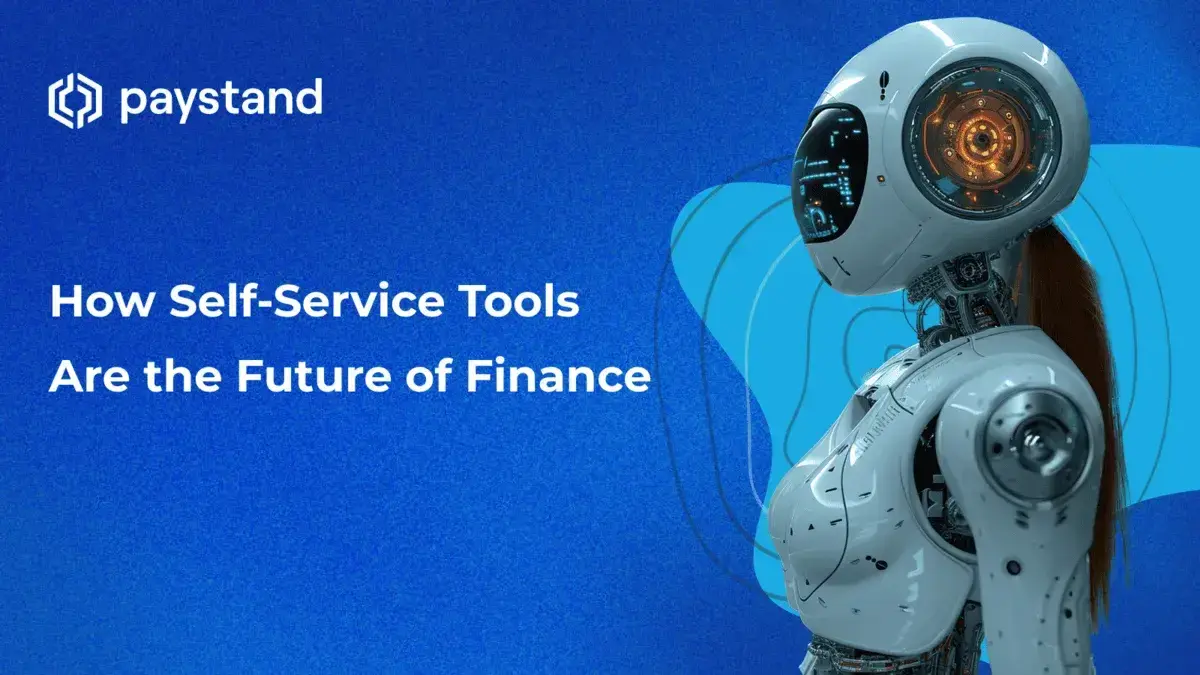How Self-Service Tools Are the Future of Finance

Table of Contents
- The self-service revolution
- What is self-service in finance?
- How does self-service empower clients and employees?
- How does self-service impact finance’s key stakeholders?
- The role of self-service in modern finance
Key Takeaways
- Self-service is revolutionizing industries like finance by enabling customers to manage transactions independently, fundamentally altering business operations.
- The growing preference for self-service options across industries reflects a major shift towards user-centric, efficient experiences.
- In finance, self-service tools enhance efficiency, reduce costs, improve accuracy, boost customer satisfaction, and allow scalability, making them crucial for competitiveness.
- Self-service enhances engagement and productivity—clients gain control over their finances, and employees focus on strategic tasks.
- Self-service tools are transforming finance roles, increasing demand for tech-savvy professionals skilled in AI, automation, and data analytics.
In recent years, self-service has become a driving force across industries, empowering customers to take control of their interactions and transactions without relying on direct assistance. This transformation is not just changing how businesses operate—it’s reshaping entire sectors, including finance.
But what does this mean for the future of financial services, and how can businesses leverage this shift to stay competitive? As self-service evolves, it brings new opportunities and challenges for finance professionals and organizations. Keep reading to explore how this revolution is shaping finance and why it’s critical for businesses to stay ahead of the curve.
The Self-Service Revolution
The concept of self-service isn’t new, but its growing popularity across industries signals a major shift. For example, more than 81% of shoppers prefer self-service options over interacting with a sales representative in retail. Similarly, **72% of customers use self-service channels like mobile apps and ATMs in banking.** This shift extends into healthcare, where 64% of patients now book appointments and access medical records through self-service portals.
This trend is even more significant in B2B transactions, where 57% of buyers prefer to research and purchase products online without engaging a sales representative. Finance is at the forefront of this evolution, with mobile banking usage increasing by 35% over the last five years. Robo-advisors, managing $1.2 trillion globally, further demonstrate how self-service drives user-centric, efficient experiences.
What is Self-Service in Finance?
Self-service in finance allows customers to manage their financial transactions and accounts independently. Whether paying bills, checking balances, or conducting transactions, customers no longer need to wait for human assistance. The shift is rooted in technological advancements and the growing demand for convenience, speed, and personalization.
The financial sector is undergoing a similar transformation. Self-service offers businesses opportunities to improve efficiency, reduce costs, and enhance customer satisfaction. Automated transactions, secure online payment portals, real-time data access, and self-service dashboards are now essential for businesses looking to stay competitive.
What Are the Benefits of Self-Service for Finance?
- Efficiency and cost reduction: Self-service tools automate tasks, empowering clients and employees, boosting efficiency, and lowering costs, enabling financial professionals to focus on strategic initiatives.
- Improved accuracy and reduced errors: Automated checks and reconciliation in self-service platforms minimize errors, ensuring accurate financial reporting and reducing manual data entry risks.
- Enhanced customer experience: Customers benefit from 24/7 access to their financial data and services. This real-time transparency allows them to make informed decisions, increasing satisfaction and loyalty.
- Scalability: Self-service tools are designed to scale as business demands grow. Whether handling more transactions or evolving alongside customer needs, these tools allow businesses to adapt without losing efficiency or accuracy.
How Does Self-Service Empower Clients and Employees?
Self-service tools significantly benefit clients and employees, revolutionizing financial interactions and tasks. By putting control in clients' hands and streamlining employee workflows, self-service solutions enhance engagement and productivity, driving business growth.
| Aspect | Client | Employee |
|---|---|---|
| Convenience | 24/7 access to financial data and services | Automated routine tasks, saving time for higher-value work |
| Personalization | Ability to customize their financial interactions | Focus on more strategic, complex projects |
| Autonomy/Independence | Control over account management and transactions | Reduced reliance on manual input, fewer errors |
| Increased Productivity | Self-service fosters better decision-making and faster responses | Enhanced productivity, driving business growth |
| Accuracy | Real-time access to accurate data for informed decisions | Minimized human error through automation |
By enabling clients to manage their financial interactions and allowing employees to focus on more impactful work, businesses can improve customer satisfaction and enhance internal operations—this dual empowerment approach positions organizations for long-term success in an increasingly self-service-oriented marketplace.
How Does Self-Service Impact the Finance Office?
Self-service tools are transforming the finance industry by reshaping the roles and responsibilities of key stakeholders. From CFOs to accountants and even talent acquisition teams, these tools introduce efficiencies and change how finance departments operate. Let’s break down the impact of self-service on each key stakeholder:
- CFOs: Self-service tools help CFOs make better decisions, manage risks, and plan strategically by providing real-time visibility and control over financial data.
- Accounts payable and receivable: Self-service automation revolutionizes AP and AR teams by streamlining invoicing, payments, and reconciliation, minimizing manual data entry and enhancing accuracy.
- Controllers: Self-service platforms provide controllers with a centralized dashboard for financial data, reducing errors and ensuring regulatory compliance.
- Accountants: Self-service tools automate repetitive tasks, allowing accountants to focus on value-driven activities like financial analysis and business advising.
As finance departments evolve to incorporate self-service technologies, the demand for tech-savvy professionals with expertise in financial technology is growing. Talent acquisition teams must look for candidates comfortable working with AI, automation, and data analytics to ensure businesses effectively leverage these tools.
The Role of Self-Service in the Future of Finance
Self-service tools are a technical upgrade and a fundamental shift in finance departments' operations. By integrating AI, cloud-based software, and other trends, these tools allow finance teams to manage more work with fewer resources. Over time, as audit processes and talent requirements shift, we expect to see an emphasis on tech-savvy professionals who can manage and analyze increasingly automated systems.
Interested in diving deeper? Download the first chapter of our ebook, The Future of Finance in 2025, to explore how self-service tools are revolutionizing the finance industry. Get chapter one, The Rise of Self-Service, here and discover how these trends can transform your business operations.






